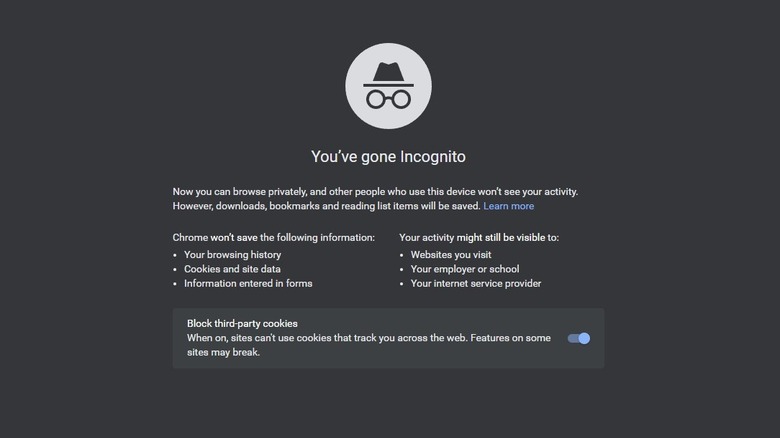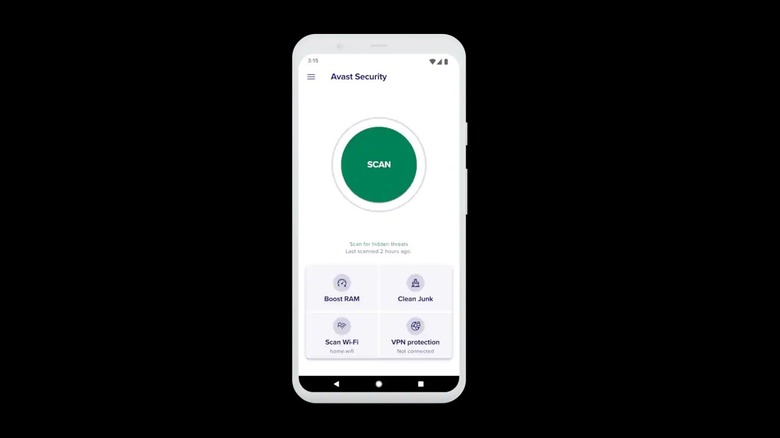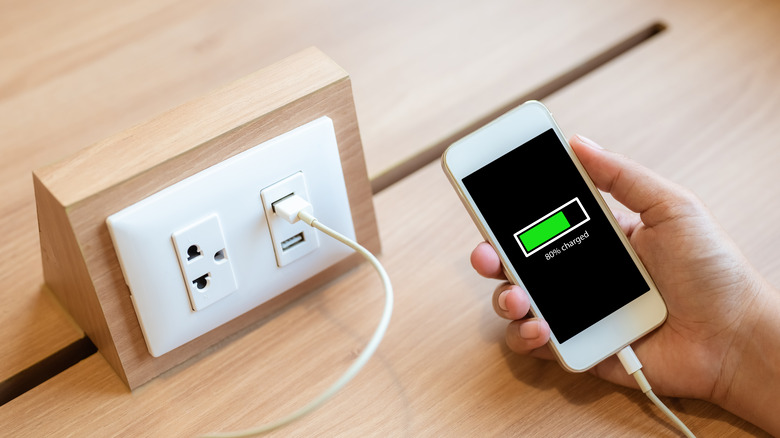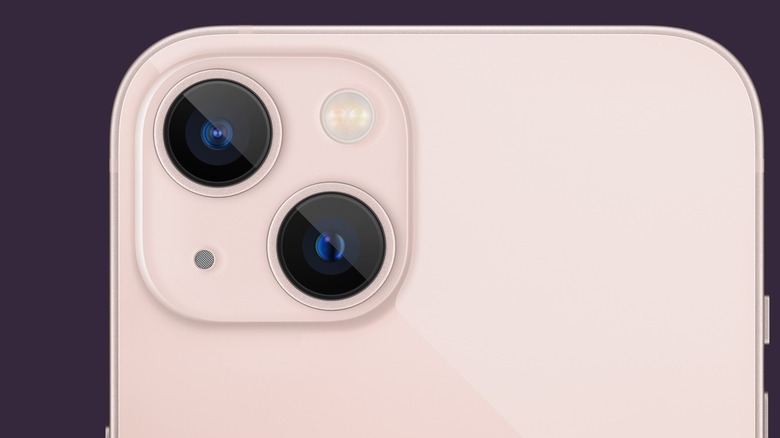Technology Myths You Need To Stop Believing Immediately
Humans have been creating myths since the beginning of our history (via World History Encyclopedia). Any time there is a gap in our knowledge about a topic, there's a tendency for myths to crop up and fill in that gap. That has been true about the natural world for thousands of years, but, more recently, myths have come to surround our relationships with technology.
So much of our lives is dependent on utilizing technology that we, as individuals, don't fully understand. Couple that with the fact that technology evolves so rapidly that it's hard to keep up, and it makes sense that myths would take hold.
Some of these myths have nuggets of truth to them: pieces of reality that got twisted as they passed from person to person. Some of them were once true, with bits of useful information about antiquated tech that aren't true any longer. Others are complete rubbish and always have been, a sort of technological urban legend that persists for reasons we're unsure of. Regardless of their provenance, these are some common technological myths that you can stop believing.
Myth: Incognito Browsing Is Private
There are plenty of reasons you might need a little extra privacy while browsing the internet, from shopping for birthday presents to searching for information you don't want housemates to see. For those times, there's incognito mode.
Most browsers have a version of private browsing, but incognito mode might not be doing what you think it's doing. You'd be forgiven for believing that your browsing history during an incognito session is entirely hidden from prying eyes, but that isn't quite true, as Google explains.
While it's true that your search history, cookies, and site data aren't stored during an incognito session, that's more or less where your privacy ends. Private browsing prevents websites from knowing who you are (as long as you don't log into a site), but it doesn't hide your IP address. Moreover, your activities can still be seen by your internet service provider and government agencies. If you're browsing from a school or employer-owned device, they can potentially see all of your activity whether you're in incognito mode or not.
There are steps you can take to make your browsing more private, like using a VPN, but incognito browsing is the internet sleuthing equivalent of a fake mustache and a bad accent. It can only do so much.
Myth: Your Deleted Files Are Instantly Gone
The common belief is that when you delete a file, it vanishes into the digital ether, but that isn't the case. Deleting files is less like tossing them into an incinerator, and more like laying them on the top of a full trash can. They're pretty easy to pull out again if you know how.
When a file is deleted, your computer doesn't actually erase it. Instead, it simply marks the space the file occupies as available for use by new files. It isn't actually gone until new data is written over it. That's because truly erasing a file takes as much effort as writing over it. So, in order to save time and processing power, your computer waits to do so until you have something new for it (via How-To Geek).
That's great news if you've accidentally deleted something and need to recover it. There are a number of services you can use to retrieve your files as long as they haven't yet been written over. However, that also means that those with ill intentions can retrieve your recently-deleted files without too much effort. That might be a particular concern if you're replacing your hard drive, and want to make sure your old data is secure.
If you want to make sure no one gets their hands on your information, there are some creative ways you can reuse an old hard drive and keep it out of the wrong hands.
Myth: Task Killer Apps Speed Up Your Phone
The idea that task killers are useful comes from a misunderstanding of how RAM works on an Android device. The common belief is that apps running in the background eat up memory, and that causes your phone to run slower. That might be the case on your PC, but isn't true on your phone (via PhoneArena).
Task killer apps give you the ability to see which apps are running and manually close them. However, most apps that are running in the background are doing so for a reason. Android keeps things running by design in order to ensure that they run quickly and correctly. Your email or social media apps, for instance, run in the background so they can alert you to new messages. Forcing them to close using a task killer is a losing battle. They're just going to launch again.
Unlike your PC, which might actually start running slowly if too much RAM is in use, Android already kills processes to free up memory automatically. Task killers give the illusion of control, but at best, they're duplicating an existing process, and at worst, they're actually slowing down your phone even more (via TechNorms).
Myth: Cell Phones Can't Get Malware
An unfortunate truth of existing on the internet is that we have to deal with viruses and other malware on our computers every now and again. Thankfully, they're usually not too serious, and your antivirus software can handle them most of the time (via SafetyDetectives).
There's a common belief, however, that malware is only a concern for computers, and that cell phones are somehow immune to attacks. That just isn't true. This myth likely comes from terminology-based confusion. The terms virus and malware are often used interchangeably, and therein lies the rub. According to Avast, your cell phone probably isn't going to be infected by a virus — a malicious program that copies itself when it runs — but it can be infected by other types of malware. In fact, according to ZDNet, smartphone malware attacks are on the rise.
Malware can infect your phone when downloading apps or attachments from messages, as well as when connecting to another device, according to Avast. Android phones are particularly at risk for malware through a combination of the operating system and the sheer number of people who use them. If you find yourself the victim of a malware attack on your phone, there are a number of things you can do, including rebooting in safe mode, uninstalling suspicious apps, and installing a mobile security app (via Norton).
Myth: Full Signal Bars Mean Full Service
This myth makes a certain amount of intuitive sense. We tend to think that low bars equal poor service while full bars equal perfect service. That's because the signal bar icon is the only real way we have of visualizing our connection to a network. However, just because you have a full bar doesn't necessarily mean you're going to get a good connection.
According to CNET, your phone's signal bars are an indicator of the signal strength it is receiving from nearby cell towers, but they don't have any linear relationship with signal strength. In fact, there is no standardized unit of measurement when it comes to how signal strength is displayed on phones. That means the same number of bars on two different devices might not mean the same thing.
Moreover, the bars indicate a connection to an existing network, but not the quality of that network at any given time. As a result, if you find yourself in a high-density situation where lots of people are attempting to use a network at the same time, you might find that you have full bars while still having trouble connecting and making calls.
Myth: Cell Phones Give You Cancer
Many times, when a new technology enters the public sphere, it is quickly followed by fear. One misguided example involves the public reaction to the introduction of passenger trains. Upon their introduction, concerned parties believed they posed a significant risk to public health. Potential adverse reactions of the uterus and the brain were specifically of concern (via The Permanente Journal).
It is perhaps unsurprising that similar health concerns have followed the increase in cell phone usage. It has been commonly believed that consistent exposure to cell phones could pose an increased risk of developing cancer. The belief hinges on the fact that cell phones use radio frequency energy, and that we often hold them right next to our heads. However, after decades of increasing use and several scientific studies, there is no reliable evidence that using a cell phone increases your risk of developing cancer (via the FDA).
Considering the fact that the vast majority of people in the world now have cell phones, we would have expected a steep rise in cases of brain or nervous system cancers over the last several decades. Per the FDA, that hasn't happened. That said, Harvard Health explains that being distracted while using your phone can lead to injury, so keep it stowed when you're on the move.
Myth: You Should Let Your Battery Die Before Recharging
Many people erroneously believe you should let your phone battery drain as low as possible before charging it again in order to maintain battery life. There is a nugget of truth to this belief, but it's a consequence of old knowledge hanging on too long.
According to ScienceABC, this belief is probably a holdover from nickel-based batteries. They were known for something called the memory effect. In short, if you didn't let your battery drain completely before recharging, nickel-based batteries would start to "remember" that a full charge cycle was less than its actual capacity. That meant that over time it would lose capacity as it falsely remembered shorter and shorter charge cycles.
Most modern electronics, however, use lithium-ion batteries, and they don't have that problem. In fact, they have the opposite concern. Lithium-ion batteries aren't meant to discharge completely, and allowing them to do so might actually be harming them. Instead, lithium-ion batteries rely on charge cycles, each of which is the equivalent of a full charge. That is to say, if you charge your phone from 50% to full, that's only half a cycle. If you want to get strategic with your charging behaviors, ScienceABC recommends recharging your phone when it hits around 20% battery life.
Myth: You Must Safely Eject Flash Drives
This is another technology myth that is the consequence of outdated information. In the not-too-distant past, the recommended process for removing external drives such as flash drives or hard drives was to select the drive from your file manager, click eject, and wait for a message telling you it was safe to remove before physically removing the drive. That is no longer necessary, and it hasn't been for a few years.
Some of the confusion comes from the fact that the menu option still exists, but like the floppy disk-styled save icon, it's a relic of the past. According to Microsoft, with the update of Windows 10 version 1809, you no longer need to safely eject external drives. Quick removal is now the default setting of Windows computers, but it is still possible to operate the old way by switching to "Better Performance" under the Disk Management menu. If you do, you'll have to go back to safely removing your drives, but you'll get the benefit of write caching.
It's also worth noting that even if you're quick-removing drives, you'll want to make sure you're not actively moving files onto or off of the drive at the time. Otherwise, you're safe to pull those suckers out whenever you want.
Myth: More Megapixels Means Better Pictures
For years, it seemed like every time a new phone came out, it boasted more megapixels in the camera. In some sectors of the market, that trend seems to have leveled out. The iPhone, for instance, has come standard with 12-megapixel cameras for the last several generations (via Apple). Other manufacturers, however, are still going strong. The OnePlus 9 Pro, for example, has a 48-megapixel camera, and the iPhone 14 Pro is rumored to follow suit (via PhoneArena).
More megapixels are generally considered to be synonymous with better picture quality, but the question is whether or not that's actually true. As explained by Digital Trends, megapixels are only one part of the picture quality equation. The size of the sensor, image processing capability, and a whole host of other characteristics are just as important, if not more important, than the number of megapixels.
That isn't to say that more megapixels are a bad thing, as long as your phone packs the requisite supporting infrastructure to make use of them. Digital Trends goes on to explain that there is probably a ceiling when it comes to megapixels in smartphone cameras. Sensor size is limited by the size of the phone itself, and at a certain point, you end up with more noise or larger file sizes than are worthwhile for a phone camera.
Myth: Artificial Intelligence Is Going to Steal Your Job
On the surface, this myth makes a lot of sense. If we automate a job, then that job is no longer available for a person to perform, right? While that's technically true, the reality of automation by way of artificial intelligence and robotics is a bit more complicated.
We can take some comfort from looking at the past. Automation isn't a new thing. Factories have been using complex machines to streamline jobs for quite some time. Computers, internet connectivity, and even improvements in transportation have streamlined processes that would have taken much longer to achieve in the past. In a way, machines have been "taking jobs" for a long time. So, what gives?
The truth is, there's plenty of work to do, but that work is likely to change. According to Harvard Business Review, automation is primed to displace 85 million jobs by 2025, but the shift will also create 97 million new jobs. Many of the jobs we're likely to see go away are those which require high repetition. So, while we'll probably see fewer people working the checkout counter or factory jobs, there will be plenty of work to go around in arenas we might not have even thought of yet.










